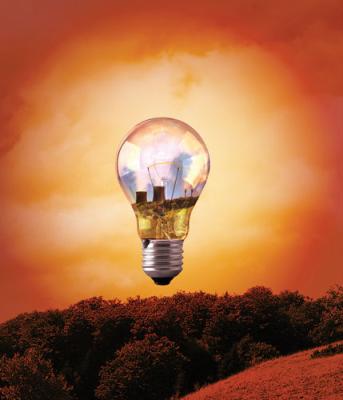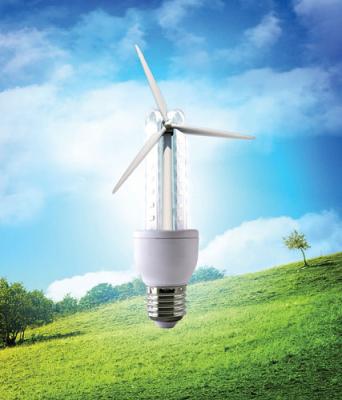 Why I’m learning to be hopeful about Climate Change
Why I’m learning to be hopeful about Climate Change
Ever since I first became aware of climate change many years ago I have experienced feelings of guilt and disappointment on a regular basis. I find myself constantly analysing my carbon footprint, feeling ashamed for forgetting the reusable shopping bags at the supermarket and guilty whenever I drive instead of taking public transport. I know that my experience is not unique. Recently I pondered, Why is it that individuals are feeling like they are solely to blame for centuries of industrial processes that have created climate change? It doesn’t seem fair nor practical. The saying goes change your thoughts and you’ll change your world and so recently I decided to try just that. Adopting a positive mindset about climate change has proven to be an easier adjustment than I’d first thought.
Here's why.
Over one weekend in November last year, millions of people gathered in cities and towns around the world to call for action on climate change. The People’s Climate March received worldwide media attention and aimed to generate widespread social awareness of climate change in the lead up to the United Nations COP21 climate talks in Paris. I walked alongside people of diverse faiths and cultures with the Faith Ecology Network, an interfaith, ecologically-focused network facilitated by the Columban Centre for Peace, Ecology and Justice in Sydney. People of all walks of life were in attendance, including scientists, health professionals, people living on the frontlines of change and young people. The voices of many were heard around the world.
Finally, after several not-so-successful climate negotiations at past UN Conferences of the Parties in Lima and Copenhagen, an agreement was reached in Paris that set an international target to limit global warming to 1.5. A collective sigh of relief was heard around the world. This is the most promising action on climate change we’ve seen yet.
Whilst it’s still early days, the momentum is certainly building. This is a welcome necessity. As current production and consumption activities currently have us on track to reach a four or five degree warming by 2100, this means that we can no longer afford to open any new coal mines or over exploit natural resources like timber, water and fisheries. This isn’t as drastic as it sounds.
There are many possible routes that governments, industries and communities can take in the next several years to begin working towards this target, many of which are already happening. The front-runner at the moment is certainly investment in renewable energy powerhouses using wind and solar sources, which are already eclipsing investments in coal and gas. There are countless examples of large-scale, profitable renewable energy projects overseas in countries such as Germany, Spain and China. Several of the 10 highest carbon-polluting companies in Australia have committed to no new coal mines and some are even investing in renewable energy projects themselves.
 Some players in the coal industry have lent their support to a process called ‘Carbon Capture and Storage’ (CCS) as a method of reducing greenhouse gas emissions. As the name suggests, CCS involves capturing the CO2 emissions of the coal burning process, turning this into a liquid form of CO2, and then depositing it deep underground under a non-permeable ground layer at selected land sites. The process is meant to mimic the natural processes that create oil. CCS however isn’t a foolproof solution. It has been subject to significant criticism, where the pros and cons are often debated. This is also the case with all proposed climate change solutions – solar, wind, high-density urban living, vegetarianism… the list goes on. These solutions might not be everything we need to solve climate change, however what they do indicate to me is progress.
Some players in the coal industry have lent their support to a process called ‘Carbon Capture and Storage’ (CCS) as a method of reducing greenhouse gas emissions. As the name suggests, CCS involves capturing the CO2 emissions of the coal burning process, turning this into a liquid form of CO2, and then depositing it deep underground under a non-permeable ground layer at selected land sites. The process is meant to mimic the natural processes that create oil. CCS however isn’t a foolproof solution. It has been subject to significant criticism, where the pros and cons are often debated. This is also the case with all proposed climate change solutions – solar, wind, high-density urban living, vegetarianism… the list goes on. These solutions might not be everything we need to solve climate change, however what they do indicate to me is progress.
Ten years ago I was a high-school student becoming increasingly alarmed at the extent of environmental issues affecting the world. Of these issues, climate change rapidly flew to number one. My classmates and I despaired over the plight of the world, as many young people do, harbouring feelings of helplessness and anger. Since then I have seen change within communities, industries and government that I never would have believed were possible. The signing of the Paris agreement is one example of this. Entire nations like New Zealand, Costa Rica and Norway committing to carbon-neutral futures is another.
In his encyclical Laudato Si’, Pope Francis calls for all of humanity to ‘recognise the need for changes of lifestyle, production and consumption, in order to combat this warming’ #23. He also calls for all people to engage in dialogue with science, to work together to care for our common home. This is already happening. An official Interfaith Climate Change Statement was drafted and signed by many religious leaders and faith communities around the world. The statement emphasised the importance of prompt ratification of the Paris Agreement from a faith-based perspective. It was presented to the President of the UN General Assembly in April.
People, industries and governments are moving, bit by bit, to mitigate and adapt to climate change. I believe that we can and will continue this trend. Slowly, conversations are being steered away from debating the reality of climate change towards asking what are we going to do about it?
Hannah Cifuentes worked as the Assistant Network Coordinator and Publications Officer in the Columban Mission Institute’s Centre for Peace, Ecology and Justice in Sydney.
Read more from The Far East, June 2016